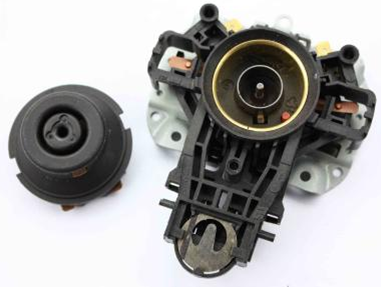Clause 3 – How to understand the definition of “temperature limiter”
temperature limiter: temperature-sensing device, the operating temperature of which may be either fixed or adjustable and which during normal operation operates by opening or closing a circuit when the temperature of the controlled part reaches a pre-determined value.
Note 1 to entry: A temperature limiter does not make the reverse operation during the normal duty cycle of the appliance. It may or may not require manual resetting.

As you can see in the picture above, this is a temperature limiter for an electric kettle. As far as I know, temperature limiter are only used in electric kettles. There may be other household appliances that use a temperature limiter, but the appliance where the temperature limiter is used the most is the kettle. The definition of thermostat is similar to temperature limiter’s definition that is “normal operation”, in that they both specify that the part can only be operated during normal operation.